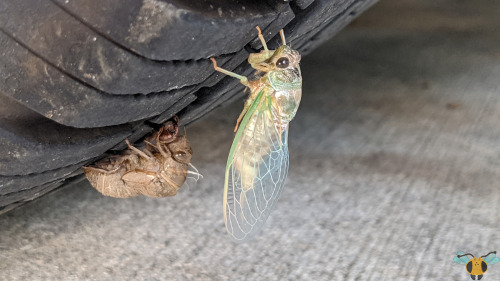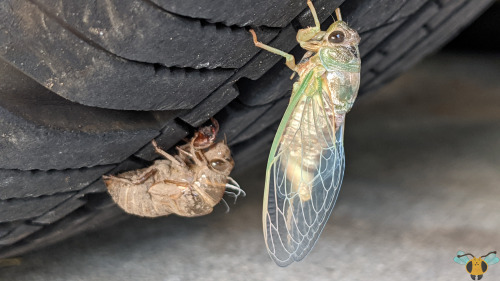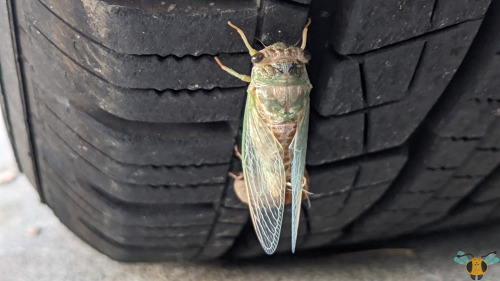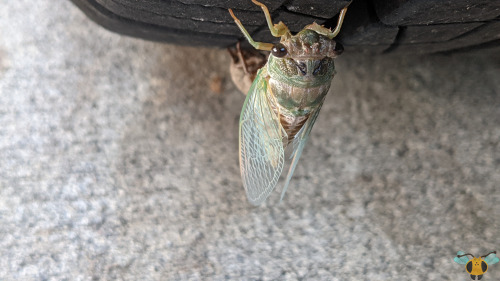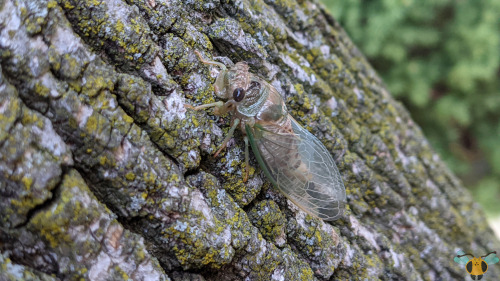#dog day cicada
Dog-Day Cicada - Neotibicen canicularis
Well, I hinted at this in a very important earlier post that honors someone who will always be with us, and here it finally is! Insects are very resourceful when it comes to entering adulthood, even if it means using manmade structures to get the job done. It may be topical to share this on Earth Day (with an insect that spend most of its life in the earth) and take a small, unconventional glance on how insects and humans interact and share the planet. I agree that other avenues such as climate change, habitat destruction, biodiversity changes and examining more significant insects (Beetles,Butterflies&Honeybees) are far more relevant, but I’d like to share the short encounter with a Cicada molting using a car tire. It’s an unexpected example of the natural world using human creations. I’ve seen Cicadas using wooden benches and concrete barriers too, but at least those are similar to trees and stones. Tires are something completely foreign, but it does offer a good grip for the nymph’s old shell to grab and hold on as it molts. This nymph must have been extremely determined to climb up the curved slope of the tire’s bottom and climb against gravity! Amazing as this new molting post is, I don’t think Cicadas would make it a yearlong habit when aforementioned natural structures are available.
Talking about nature, insects are some of the best environmental caretakers we have, and it would benefit us to learn a little more about them and realize how different insects contribute to the ecosystem and food webs. Not to mention, appreciating the contributions of every insect order, rather than just writing them all off as pests. Insects help us in more ways than we can imagine, but the wrong insect in the wrong place (e.g. an invasive specie) can be just as detrimental so we must be respectful and careful with our interaction with them. Their lives deserve all the beauty and triumph that our lives do, and that might mean a little help for them. Even caring for trees and wildflowers, cleaning up where we can and being careful with biological debris such as leaf litter and fallen logs. Nothing too intrusive unless something needs a major correction. Just a subtle, guiding hand. With this Cicada friend, I just found the adult insect stretching its wings and hardening its body, missing the molt process. It was relatively fresh as while the wings were almost ready, the body’ still needed more time to darken. I didn’t know how long the Cicada friend would hang around for, but I didn’t want to leave it alone, so I picked it up and placed it on a nearby tree. Perhaps it’s for naught, but at least that Cicada won’t have all that effort ruined by being run over. After it began to move around and climb upwards, I continued with my walk. Hopefully that Cicada enjoyed a wonderful summer!
Pictures were taken on August 18, 2021 with a Google Pixel 4.
Post link
@reverse-rainbows submitted: I’m wondering what cicada this lil fella is! It’s from brood x, found it after it died and preserved it’s body in alcohol. From [removed] (remove location pls)
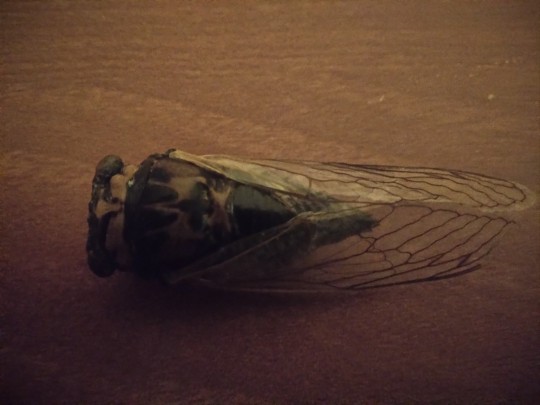


RIP, little friend! This is not a Brood X cicada. Brood X were 17 year periodical cicadas in the genus Magicicada. This fellow is a dog-day cicada in the genus Neotibicen. It may have come out around the same time as the Brood X cicadas, but it’s an annual species. These guys take 2-5 years to develop underground before emerging as adults, but there are overlapping generations that appear every year :)

